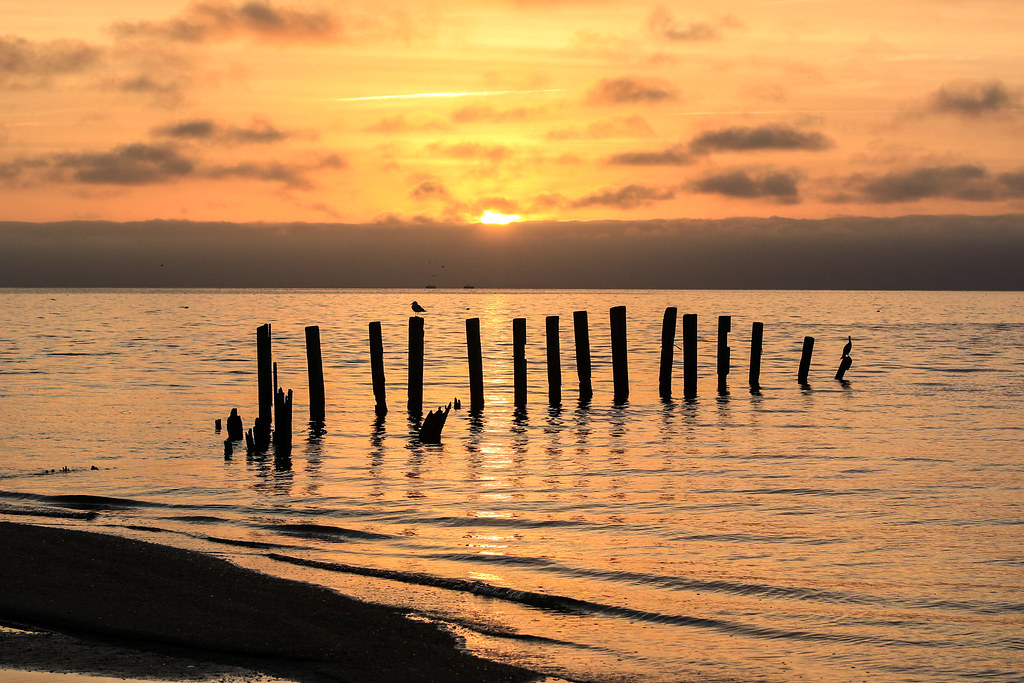Army Corps, National Fish and Wildlife Foundation Release Draft Chesapeake Bay Comprehensive Plan for Input
2,592 candidate projects identified in Maryland

Chesapeake Bay Sunrise by Yvonne Navalaney
U.S. Army Corps of Engineers, Baltimore and Norfolk districts, in partnership with the National Fish and Wildlife Foundation (NFWF), released June 14 the draft Chesapeake Bay Comprehensive Water Resources and Restoration Plan and Restoration Roadmap that identifies 2,592 candidate aquatic ecosystem restoration, enhancement and conservation projects for implementation in Maryland.
Candidate projects may include wetland or stream restoration, beneficial use of dredged material, fish passage, living shorelines, shoreline protection, emergency streambank protection, riparian buffers, acid mine drainage abatement, and ecosystem resilience. Opportunities may exist on public, private or government property. Opportunities for Corps technical assistance may include analyses, modeling, data collection or mapping related to coastal, riverine, stormwater flooding or other water-related issues.
Comments and input on additional candidate projects will be accepted until July 16, 2018. A webinar will be hosted June 28, 2018, for those who have questions regarding the draft comprehensive plan.
“The comprehensive plan’s intent is to provide a single, comprehensive and integrated restoration roadmap to help inform and guide decision makers at all levels of government and non-governmental agencies of the problems, needs and opportunities that exist in Chesapeake Bay Watershed,” said Angie Sowers, Baltimore District, Integrated Water Resources management specialist. “The 64,000-square-mile watershed is home to 18 million people – not to mention immense ecological, cultural, economic, historic and recreational resources.”
The plan will assist with the implementation of the 2014 Chesapeake Bay Watershed Agreement’s goals to advance the restoration and protection of the watershed.
“Maryland looks forward to continuing our lasting partnership with the U.S. Army Corps of Engineers to enhance, protect and restore our national treasure, the Chesapeake Bay,” said Mark Belton, Maryland Department of Natural Resources secretary. “Together, we are making great strides toward our shared watershed goals by implementing and incorporating the latest data, design and innovation in our work, while focusing our assistance, expertise and investments on achievable results. This roadmap will spur discussion on priorities and projects, and provide the partners with direction.”
Within the draft report, the Corps and NFWF identify project opportunities that leverage state-based watershed improvement plans and Bay Agreement goals. The objective is to enhance ongoing or planned actions, not duplicate them.
“This plan represents a critical milestone for the Chesapeake Bay restoration effort, providing clear direction on how partners can leverage the full breadth of the Corps‘ technical expertise and financial resources to achieve state and local aquatic ecosystem restoration and protection objectives,” added Jake Reilly, Chesapeake Bay program director for NFWF. “By facilitating engagement of the federal-state Chesapeake Bay Program, we have ensured that the plan maximizes alignment and added value to the existing regional Bay restoration effort.”
The draft plan includes a summary, main report, planning analyses (methodology), agency coordination and public involvement appendices, and draft appendices for each state in the Bay watershed and District of Columbia, which detail the individual existing watershed conditions and Watershed Action Plans for these areas. A Comprehensive Plan Results Database and Candidate Restoration Projects Database are also available.
“These tools will allow government entities and organizations to view candidate aquatic restoration projects that stakeholders have submitted for consideration,” said Sowers. “We are seeking comments specifically on how the results of the analyses will provide value to and be used by stakeholders, and any additional candidate restoration projects not listed that should be included for consideration and implementation by the Corps and other partners.”
Comments can be submitted on the project web page or electronically to [email protected], or via mail* to:
Attn: Angie Sowers
U.S. Army Corps of Engineers, Baltimore District
2 Hopkins Plaza
Baltimore, MD 21201
*Mail must be postmarked by July 16, 2018
Comments will help inform the final report, which is anticipated to be submitted to Congress in summer 2019, and will identify at least one project in each Bay watershed state and the District of Columbia that can be considered for implementation or technical assistance by the Corps or local jurisdictions.
The Corps contributed 75 percent of the nearly $3-million cost share for the comprehensive plan, while NFWF partnered with the Chesapeake Conservancy and U.S. Environmental Protection Agency’s Chesapeake Bay Program Office to contribute 25 percent of the cost share in the form of in-kind services (non-monetary contributions) from the Conservancy and others in the Bay watershed to develop high-resolution land-cover data for the watershed.
To view the draft comprehensive plan and for more information, visit: http://www.nab.usace.army.mil/Missions/CivilWorks/ChesapeakeBayComprehensivePlan.aspx.
